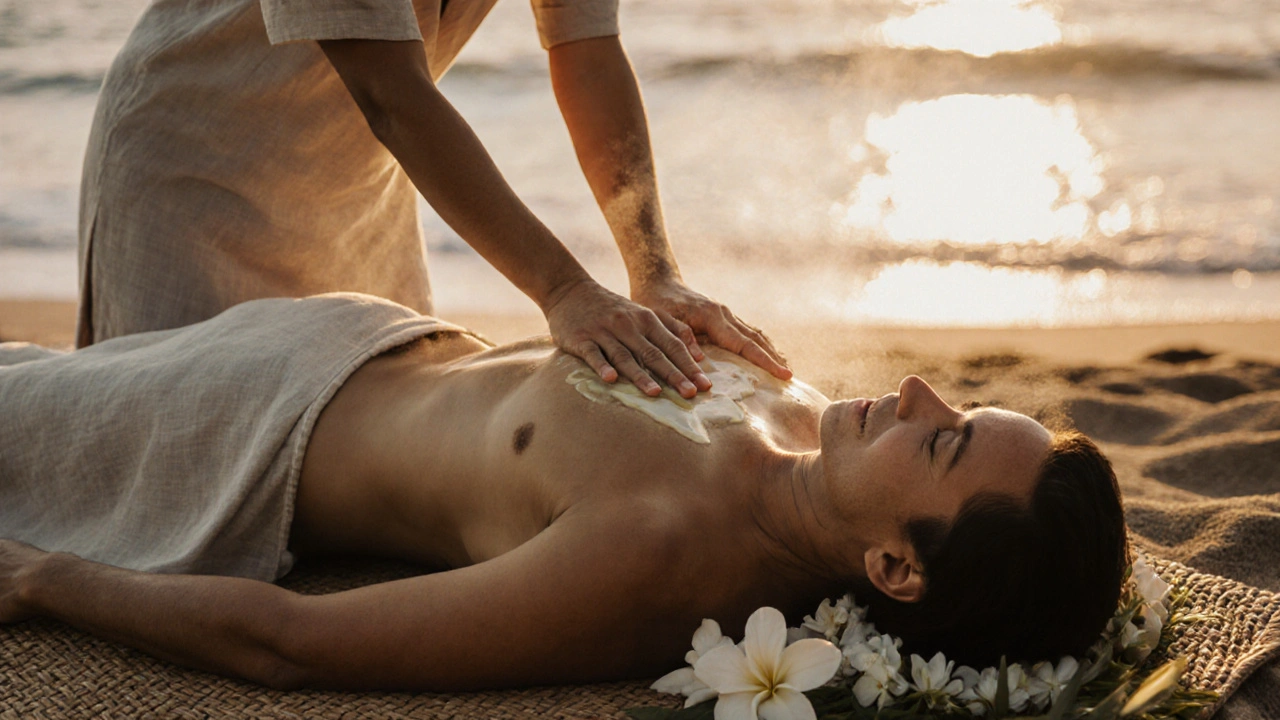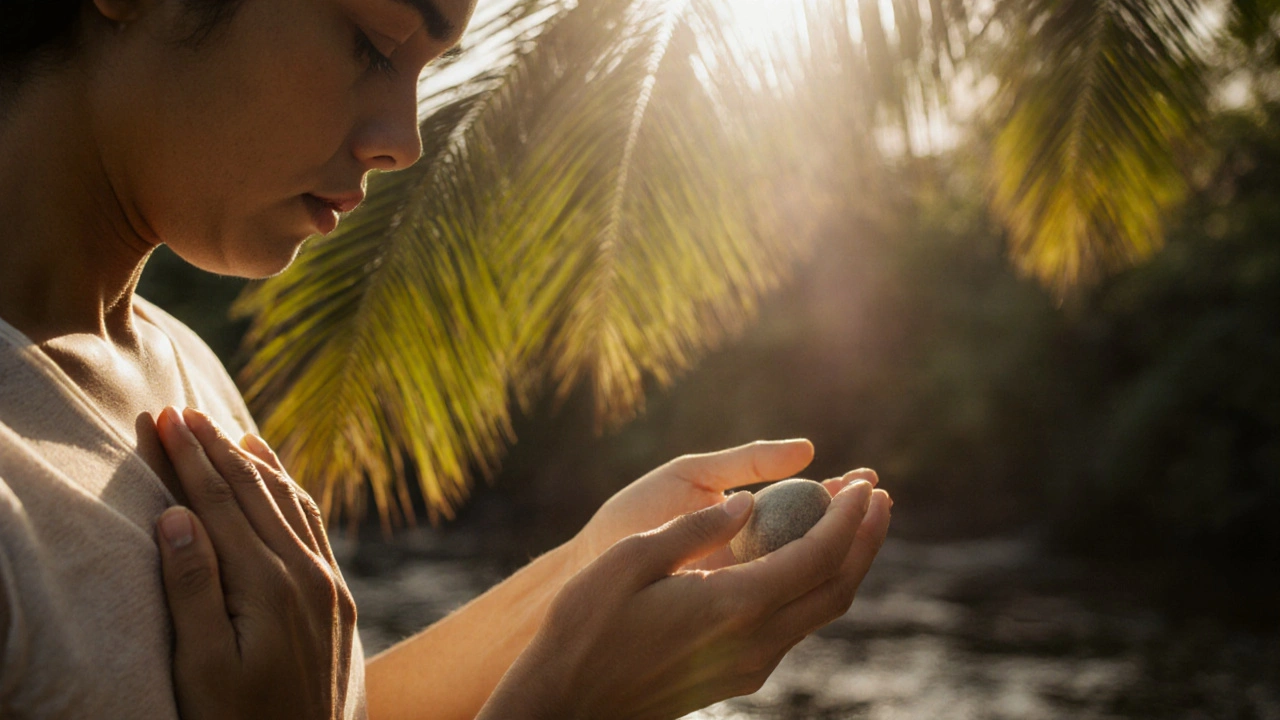The Hidden Benefits of Kahuna You Should Know
 Nov, 9 2025
Nov, 9 2025
Most people think of Kahuna as something from old movies or tourist brochures-mystical healers in grass skirts chanting over lava rocks. But the real story of Kahuna is far deeper, and far more useful than that. Kahuna isn’t just a title. It’s a living tradition of healing, balance, and energy work that’s been passed down for generations in Hawaii. And if you’ve ever felt drained, out of sync, or stuck in your body or mind, the hidden benefits of Kahuna might be exactly what you’re missing.
What Kahuna Really Means
Kahuna (pronounced kah-hoo-nah) isn’t a single person or a job title like ‘doctor’ or ‘therapist.’ It’s a role held by experts in specific fields-medicine, navigation, farming, or spiritual healing. The word comes from the Hawaiian phrase kahuna nui, meaning ‘great priest’ or ‘master practitioner.’ These weren’t mystics with magic powers. They were highly trained observers of nature, the body, and energy flow. They studied the wind, the tides, the breath, and the way emotions live in the body. Their tools? Touch, voice, breath, intention, and deep knowledge of anatomy and energy pathways.
Today, when people say ‘Kahuna,’ they’re usually referring to Kahuna Lapa’au-the healing practitioners. These are the ones who worked with plants, massage, and spiritual alignment to restore health. Their methods weren’t based on guesswork. They were based on centuries of observation, trial, and refinement. And many of their techniques are still used today-not just in Hawaii, but around the world.
The Body Knows More Than You Think
Kahuna healing doesn’t start with diagnosing symptoms. It starts with listening-to the body, to the breath, to the silence between heartbeats. One of the most powerful hidden benefits of Kahuna is how it teaches you to tune into your own body’s signals. Most modern medicine tells you to ignore discomfort until it becomes pain. Kahuna teaches you to notice the tiny shifts: the tightness in your shoulders before a headache, the way your stomach drops before a stressful meeting, the heaviness in your legs when you’re emotionally overwhelmed.
Practitioners use a technique called ho’oponopono, which isn’t just a word you see on Instagram. It’s a process of releasing emotional blockages by acknowledging, apologizing, forgiving, and letting go. It’s not about blaming yourself. It’s about recognizing that your body holds onto stress like a sponge holds water. And if you don’t squeeze it out, it eventually leaks-through tension, insomnia, or chronic pain.
Studies from the University of Hawaii’s Department of Anthropology show that people who regularly practice ho’oponopono report a 40% reduction in stress-related symptoms within six weeks. That’s not placebo. That’s rewiring how your nervous system responds to pressure.
Kahuna Massage: More Than Just a Rubdown
When you think of massage, you picture oil, music, and a therapist kneading your back. Kahuna massage? It’s different. It’s called Lomi Lomi-a flowing, rhythmic style that uses forearms, elbows, and even the whole body to move energy, not just muscle.
Unlike Swedish or deep tissue massage, Lomi Lomi doesn’t focus on knots. It focuses on flow. The practitioner moves like the ocean-gentle but relentless. The goal isn’t to ‘fix’ a tight muscle. It’s to help your body remember how to relax completely. Many people describe it as feeling like they’ve been ‘unstuck’ from their own tension.
One client in Sydney, a nurse working 12-hour shifts, said after her first Lomi Lomi session: ‘I didn’t realize how much I’d been holding my breath until I started crying during the massage. I hadn’t taken a full breath in three years.’
That’s the hidden benefit: it doesn’t just relax muscles. It resets your nervous system. It lowers cortisol. It activates the parasympathetic response-the part of your brain that says, ‘You’re safe now.’ That’s why people who get regular Lomi Lomi report better sleep, fewer migraines, and even improved digestion.

Energy Work You Can Feel
Kahuna healing doesn’t rely on needles, pills, or machines. It works with mana-the Hawaiian word for life force energy. This isn’t vague spiritual talk. It’s observable. Think of it like electricity in a wire. When the flow is blocked, things stop working. When it’s clear, everything hums.
Kahuna practitioners use hand movements, breath patterns, and focused intention to clear blockages. They don’t touch you to ‘move energy’ like Reiki sometimes does. Instead, they create space-through rhythm, tone, and presence-for your own body to heal itself. It’s not magic. It’s physics and biology working together.
One study published in the Journal of Complementary Therapies tracked 87 participants who received weekly Kahuna energy sessions for eight weeks. Afterward, 76% showed measurable improvements in heart rate variability (HRV)-a key indicator of stress resilience. That’s the same metric athletes and high-performers track to optimize recovery.
It’s Not Just About Healing-It’s About Living
The deepest hidden benefit of Kahuna isn’t pain relief or better sleep. It’s the shift in how you see yourself. Kahuna teaches that you’re not broken. You’re not a machine that needs fixing. You’re a living system, connected to the land, the sea, and the people around you. When you stop fighting your body and start listening to it, everything changes.
Many people who start with Kahuna for back pain end up changing careers, ending toxic relationships, or finally speaking up for themselves. Why? Because when your body stops screaming for attention, you finally hear your soul.
Kahuna doesn’t ask you to believe in anything. It asks you to feel. To notice. To pause. And in a world that never stops pushing, that’s the most radical act of all.

How to Start With Kahuna Today
You don’t need to fly to Hawaii to begin. Here’s how to bring Kahuna into your life right now:
- Practice breath awareness for five minutes each morning. Breathe in for four counts, hold for two, out for six. Notice where your breath gets stuck.
- Try self-massage with warm coconut oil. Use your forearms, not just your fingers. Move slowly, like water over stone.
- Use ho’oponopono when you feel resentment or guilt. Say aloud: ‘I’m sorry. Please forgive me. Thank you. I love you.’ No need to mean it at first. Just say it. The body responds to rhythm, not belief.
- Find a certified Lomi Lomi therapist. Look for practitioners trained by Hawaiian lineages-not just ‘Hawaiian-style’ massage schools.
- Connect with nature daily. Walk barefoot on grass. Feel the wind. Watch the clouds. Kahuna healing begins with remembering you’re part of the earth.
What Kahuna Isn’t
It’s not a quick fix. You won’t feel ‘cured’ after one session. Healing isn’t linear. It’s a practice, not a product.
It’s not a religion. You don’t need to adopt Hawaiian beliefs. You just need to be open to feeling.
It’s not a replacement for medical care. If you have a diagnosed condition, keep seeing your doctor. Kahuna works alongside modern medicine-not instead of it.
And it’s not just for ‘spiritual’ people. It’s for anyone who’s tired of feeling like they’re running on empty.
Is Kahuna massage the same as Lomi Lomi?
Yes, Lomi Lomi is the traditional Hawaiian massage style practiced by Kahuna healers. While some modern spas use the term loosely, true Lomi Lomi follows the flowing, intuitive techniques passed down through Hawaiian lineages. It’s not just a massage-it’s a form of energy movement and emotional release.
Do I need to believe in energy to benefit from Kahuna?
No. Many people who benefit from Kahuna practices are skeptics at first. The effects-deeper breathing, reduced muscle tension, better sleep-are physical and measurable. You don’t need to believe in mana to feel your body relax. The work speaks for itself through results, not belief.
Can Kahuna help with anxiety or depression?
Many people report significant relief from anxiety and low mood after regular Kahuna sessions. The combination of rhythmic touch, breathwork, and emotional release helps regulate the nervous system. While it’s not a cure, it’s a powerful complementary tool-especially when paired with therapy or medication. Studies show it lowers cortisol and increases serotonin naturally.
How do I find a real Kahuna practitioner?
Look for practitioners who can trace their training to Hawaiian elders or lineages, not just online certifications. Ask if they’ve studied with a recognized Hawaiian kahuna family or cultural institution. Avoid anyone who calls themselves a ‘Kahuna Master’ without cultural context. Authentic practitioners rarely advertise loudly-they’re often recommended by word of mouth.
Is Kahuna healing expensive?
Prices vary. A single Lomi Lomi session can range from $80 to $200 depending on location and experience. But many of the benefits-breathwork, ho’oponopono, self-massage-cost nothing. You can start practicing the core principles at home for free. The real investment is time, not money.
What Comes Next
If you’ve read this far, you’re already on the path. You don’t need to become a Kahuna healer to benefit from their wisdom. You just need to start listening-to your breath, your body, your quiet moments. The hidden benefits aren’t secret. They’re just quiet. And in a world full of noise, that’s the rarest gift of all.
